Lorenzo Fontolan (Inmed - CPT)
Brain mechanisms of flexible behavior
Background
May 2023 - present | CENTURI group leader
2021 - 2023 | Research Scientist - Janelia Research Campus HHMI, USA.
2015 - 2021 | Postdoctoral Associate - Janelia Research Campus HHMI, USA.
2011 - 2015 | Ph.D. in Neuroscience - Encoding speech through brain rhythms - ENS Paris, France and University of Geneva, Switzerland.
2011 | M.Sc. in Physics - Learning hierarchical memories with binary synapses - La Sapienza University of Rome, Italy.
2009 - 2010 | Visiting scientist - Center of Theoretical Neuroscience, Columbia University of New York, USA.
2007 | B.Sc. in Physics- La Sapienza University of Rome, Italy.
Location
Luminy campus, Marseille (France)
About his research
To foster survival in a dynamic world, animals must be able to quickly adapt their behavior in response to unpredictable environments. The nervous system has the ability to assign the appropriate responses to sensory stimuli according to its internal state (e.g. the subjective perception of time, emotional states) or an external context (e.g. specific social rules, different environmental demands). For example, when you are at the stadium attending a game and happen to see an old friend a few seats away, you will not hesitate to say “Hello!” with a loud greeting. Instead, if the fortuitous encounter happened at a library, the same greeting would be barely whispered so not to disturb readers.
The research goal of my lab is to understand the neural basis of flexible behavior by developing computational models of brain circuits. To study the synaptic and circuit mechanisms that enable flexible behavior, we employ theoretical and numerical techniques from dynamical systems, physics, and machine learning. We collaborate with experimental labs around the world to draw inspiration from their work and to test our models.
Some of the questions that motivate our work are:
- How does flexible behavior emerge from neuronal interactions?
- How do internal brain states modulate cognitive functions such as memory and perceptual decision-making?
- How is information encoded in the spatio-temporal pattern of neural activity?
- Which mechanisms allow multiple brain regions to exchange and integrate information during perception?
- How are communication pathways in the brain affected by neurological disorders?
- Which features shape neural dynamics during learning and development?
We are committed to creating an inclusive environment open to individuals from different cultures, ethnicities, and socio-economic backgrounds.
Open positions:
I am currently hiring Ph.D. students and postdoctoral fellows. Please contact me for more information.







